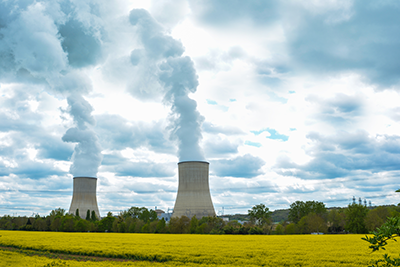Nuclear power is the only clean, low-carbon energy source that is scalable at the levels needed to provide energy to growing global power demands. In the last 50 years, the global energy demand has tripled due to the number of developing countries and innovations in technology. It is projected to triple again over the next 30 years (2050).
Nuclear Energy emits 18 times less CO2 than biomass, 4 times less than solar power, 2 times less than hydroelectricity and produces power at levels unattainable by any other source with the smallest ecological footprint of any the so called “green solutions”. Leveraging nuclear energy is the quickest way to reduce carbon emissions as quickly as possible.
Currently, nuclear reactors provide about 20% of the United States energy production while providing 52% of the country’s carbon free electricity, according to the Office of Nuclear Energy.
It’s time to have an honest look at all our energy options and the real consequences of the choices we make.
With more than 75 projects in North America alone (2018), the next generation of nuclear is here. Advanced reactors utilizing various fuel sources are being designed and tested around the globe, poised to provide power to the grid as early as 2026.

Nuclear is part of the clean energy portfolio and produces the most efficient energy of all forms of energy production. It should be noted that uranium which is the current dominate fuel is not technically considered renewable by many individuals and organizations, but it is recyclable at a rate of 96%. The only byproduct of the production of nuclear energy is excess steam, which is simply recycled into the atmosphere as clean water vapor.
Contrary to opponents of nuclear energy that deem it unsustainable, there are ample resources and fuel sources to provide energy for potentially 1,000 years depending on the fuel chosen and the technology of today. As technology increases, so will the efficient use of the fuel(s) used for nuclear reactors.
As the fuel sources are changed/modified (e.g., thorium, coal combustion residuals, etc.) there are ample resources for sustainable energy. Also, as uranium is obtained differently, such as through seawater, uranium would be a continuously replenished natural resource.
In addition, uranium is being replenished from the ground, and estimates from the International Journal of Sustainable Energy show that by using breeder reactors there is enough uranium on earth for its remaining geological life. Innovations, such as pyroprocessing researched by the Argonne National Laboratory, will improve the situation further in the coming years. Research is demonstrating that this resource may be redefined officially as renewable in the near future, many scientists have already reached that conclusion. Recently, (2022) the European Commission joined many of the world’s top scientists declaring nuclear a green energy source.